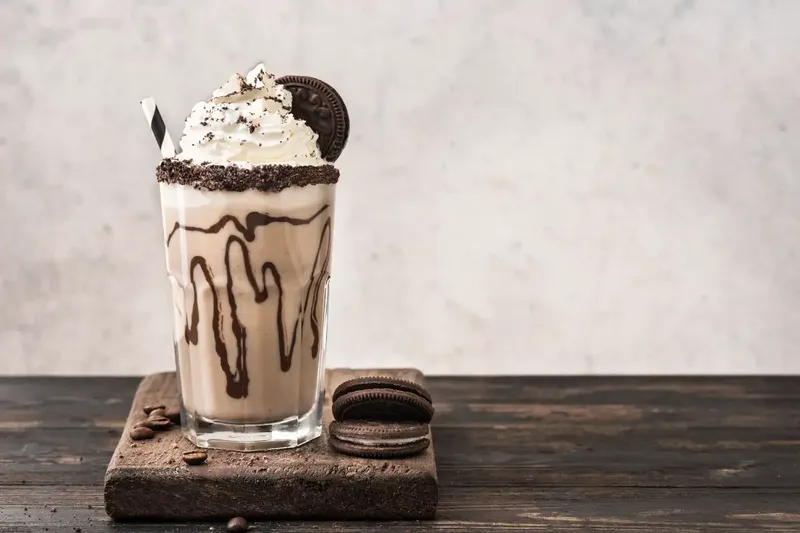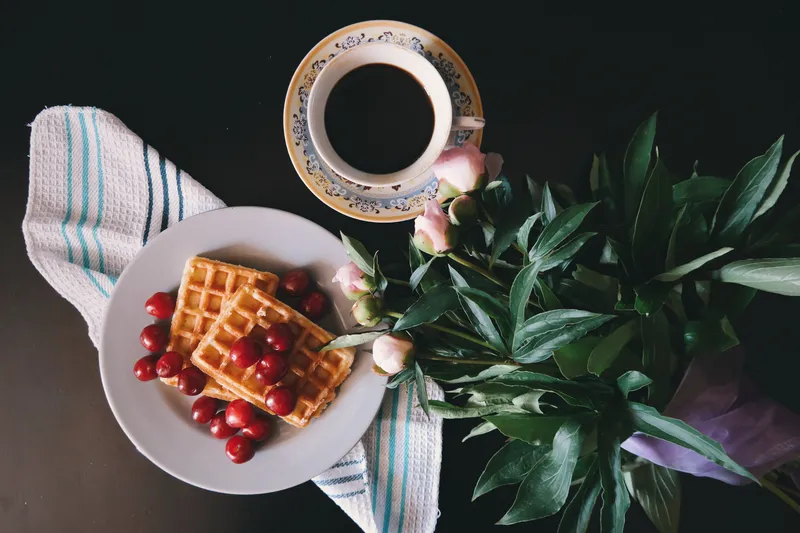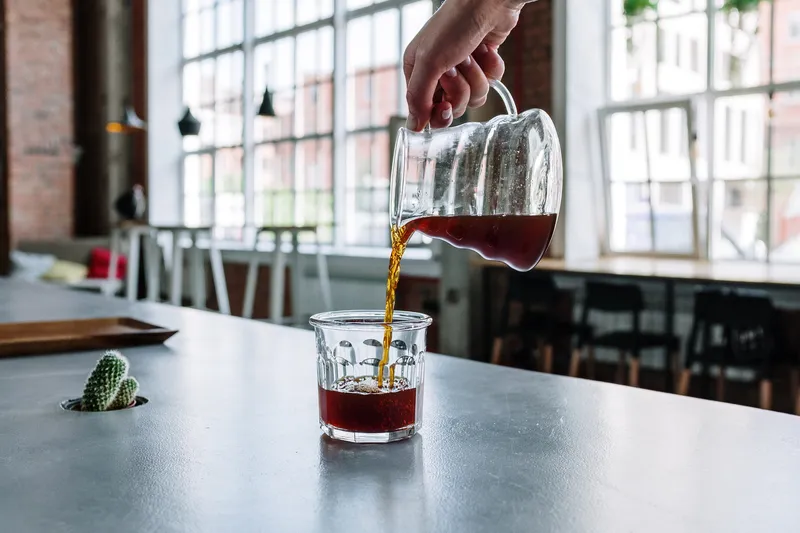When faced with a coffee menu brimming with enticing choices, such as lattes and mochas, it's easy to feel overwhelmed. Whether you're an espresso enthusiast seeking to deepen your understanding of caffeinated concoctions or just an occasional coffee drinker, distinguishing between a mocha and a latte is essential. This article aims to shed light on these two beloved coffee beverages and their subtle differences, enriching your understanding of the mocha vs. latte debate. Explore the key characteristics that set these drinks apart and expand your coffee knowledge.
| The Short Answer |
| When comparing a mocha to a latte, the primary distinction lies in including chocolate syrup. In essence, a mocha can be described as a latte infused with a delightful chocolate flavour. |
Comparing Mocha and Latte: Exploring Their Commonalities and Distinctions for Coffee Enthusiasts
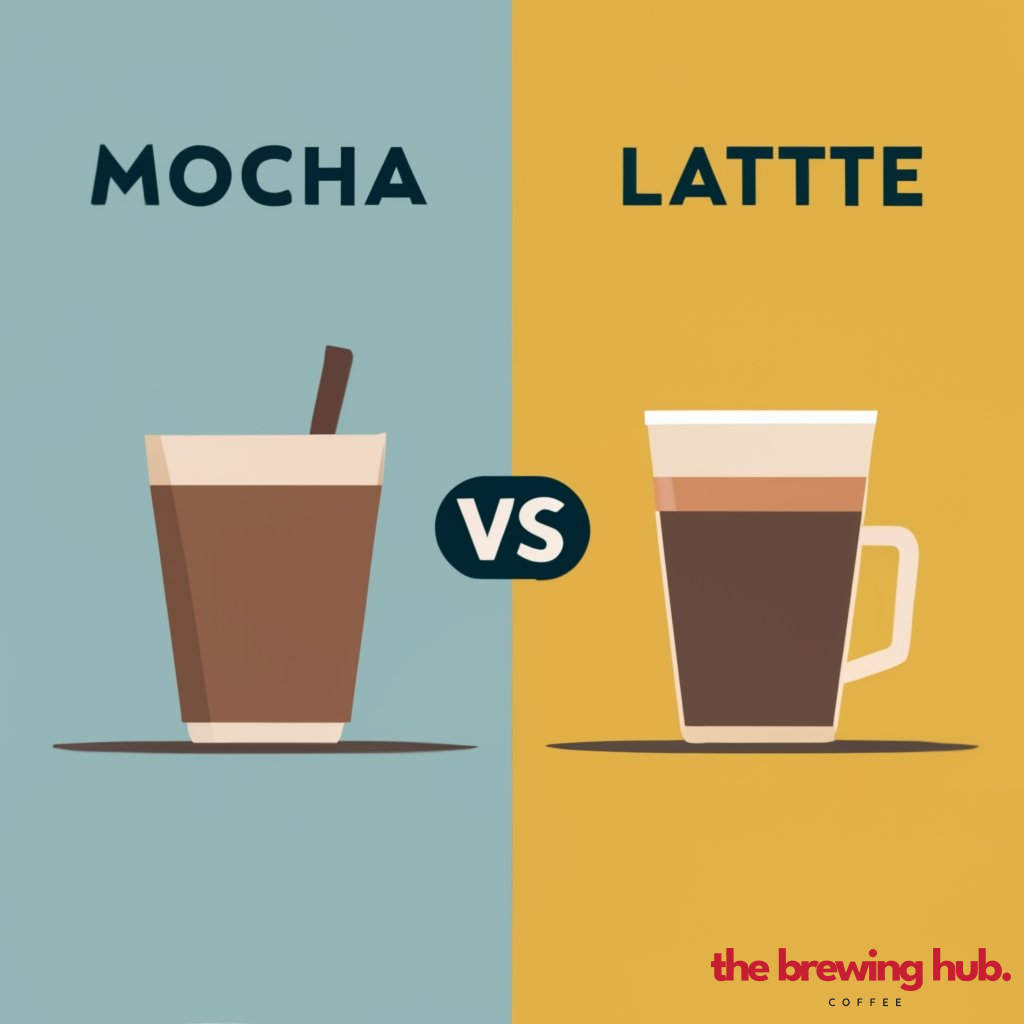
Whether you're skilled with an espresso machine or prefer following a precise recipe, both of these coffee concoctions, mocha and latte, rely on the same fundamental ingredients: espresso and milk. While it's conceivable to craft a mocha or latte without specialized equipment, the results may not quite measure up to those achieved with a dedicated machine – so if you have the means, it's a worthwhile investment!
Apart from their shared reliance on specific preparation tools and basic components, mocha and latte share a few more commonalities. However, their distinctive proportions and one special ingredient set them apart, infusing each with its unique flavour profile. Without further ado, let's delve into the details of each coffee drink!
The Evolution of Mocha Coffee: A Historical Journey
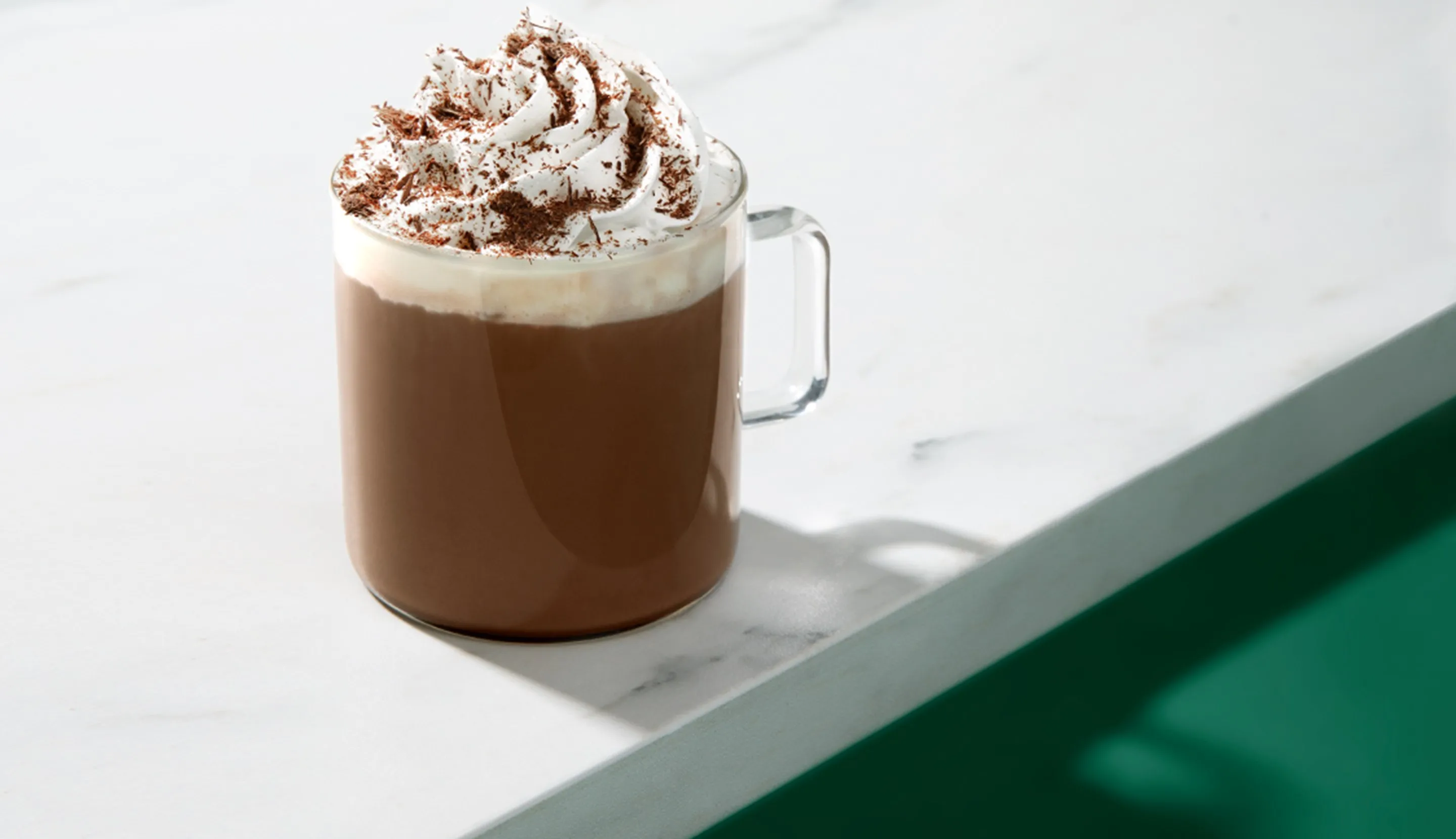
The mocha is undoubtedly among the world's favourite coffee beverages. It blends the delightful flavours of espresso with the indulgent sweetness of chocolate, making it a top choice for coffee enthusiasts with a penchant for sweetness. The taste of a mocha can vary, spanning from creamy and sweet to bold and slightly bitter, depending on the specific preparation method, offering versatility to cater to your taste preferences.
The mocha also referred to as a cafe mocha or mochaccino, has intriguing historical roots dating back to 15th-century Yemeni coffee markets.
It all began in Yemen during the 15th century, specifically in the bustling coffee markets of Mocha, a coastal city along the Red Sea. Mocha gained fame for its coffee beans, renowned for their distinct "chocolatey" flavour. Interestingly, Yemeni coffee beans, even today, continue to offer these richer and more intense flavours, setting them apart from the fruity and floral profiles commonly found in speciality coffee shops.
The journey of these prized beans continued as coffee traders from Mocha introduced them to Europe, where they underwent roasting and brewing processes to create various coffee beverages. The modern mocha as we know it today, however, gained popularity in the United States during the 1980s, coinciding with the increasing trend of espresso-based drinks.
Varieties of Mochas:
Although mochas are typically enjoyed as a hot beverage, there are numerous ways to savour this delightful drink. Some of the well-loved mocha variations encompass:
- Hot Mocha
- Hot Mocha with Whipped Cream
- Iced Mocha
- White Mocha (crafted with white chocolate)
- Dark Chocolate Mocha
- Peppermint Mocha
- Frozen Mocha
Pros & Cons of Mocha:
Pros:
- A Delicious Pairing of Chocolate and Coffee: Mocha, the coffee world's sweetest love affair, brings together the rich, comforting embrace of chocolate with the bold, aromatic allure of coffee. It's a match made in caffeinated heaven.
- Multiple Options for Flavor: Mochas offer a tantalizing playground for flavour exploration. Whether you're in the mood for white chocolate, dark chocolate, or even a hint of peppermint, there's a mocha variation to satisfy every craving.
- Usually Served with Chocolate Shavings or Whipped Cream: Mochas aren't just about taste; they're about presentation too. Many mochas come adorned with luxurious chocolate shavings or a decadent dollop of whipped cream, turning your coffee into an indulgent treat for the senses.
Cons:
- May Be Too Sweet: For those seeking a more balanced coffee experience, be cautious. Mochas tend to lean on the sweeter side, and the chocolatey goodness might overpower the coffee's nuanced flavours.
- Not Very Espresso-Forward: If you're an espresso purist looking for a bold coffee kick, a traditional mocha might not deliver the intense espresso experience you crave.
The Evolution of Latte Coffee: A Historical Journey
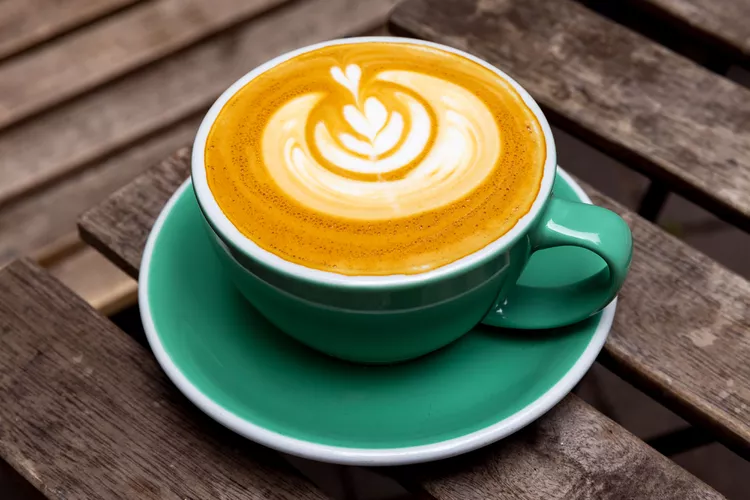
The latte stands as one of the world's beloved coffee creations, appreciated for its harmonious blend of espresso's robustness and the creamy allure of steamed milk. Latte enthusiasts have a wide spectrum of taste experiences to explore, ranging from mild and milky to strong and bold, depending on their personal preferences and choices in preparation.
The latte, often referred to as a caffe latte, has a history that can be traced back to Italian coffee culture, where it gained prominence.
Originating in Italy, the latte, or caffe latte, has its roots deeply embedded in the heart of Italian coffee traditions. The word "latte" itself means milk in Italian, highlighting the central role of milk in this delightful coffee concoction. In Italy, a traditional latte is typically prepared with a shot of espresso and a larger portion of steamed milk, resulting in a velvety, milky coffee experience.
As coffee culture made its way across continents, the latte evolved and adapted to local preferences. In many countries, including the United States, the latte became a staple in coffee shops, appreciated for its comforting, creamy nature.
Varieties of Lattes:
- Cafe Latte
- Vanilla Latte
- Mocha Latte
- Caramel Latte
- Iced Latte
- Chai Latte
- Matcha Latte
Pros & Cons of Latte:
Pros:
- Can Be Made with Many Syrups and Flavors: Lattes are a blank canvas for flavour creativity. From vanilla to caramel, the possibilities are endless. You can customize your latte to match your mood or the season.
- Rich Espresso with Creamy Milk: Lattes strike the perfect balance between espresso's robustness and the velvety smoothness of steamed milk. It's a harmonious union that satisfies your craving for both coffee strength and creamy comfort.
Cons:
- May Not Be Sweet Enough: While lattes provide ample room for flavour experimentation, they might not be sweet enough for those with a serious sweet tooth. If you're looking for a sugar rush, you might need to add extra syrup or opt for a mocha instead.
Making Mochas and Lattes in Your Own Kitchen / Home
When it comes to espresso drinks, convenience is key. Having the right equipment, whether it's a Moka pot or an espresso machine, empowers you to enjoy café-quality beverages like lattes and mochas from the comfort of your own kitchen. But how do these two favourites, mocha vs. latte, stack up when it comes to home preparation?
Mocha:
Craving a mocha? You'll need some chocolate sauce, which you can either make from scratch or purchase. To create your own sauce, gently heat chocolate chips or bars with a dash of milk on the stove. Once the sauce is ready, brew your espresso shots and heat your milk. Add the espresso first, followed by the chocolate sauce, and give it a good stir. Finish by incorporating the milk. This method ensures all the flavours meld perfectly. For an extra indulgence, top your mocha with whipped cream and garnish with chocolate shavings, sprinkles, or syrup. Enjoy your homemade espresso delights!
Latte:
For a latte, the process is simple. Just blend hot milk with your espresso, ideally using a frother for that creamy texture. No frother? No problem! You can heat the milk on the stovetop or in the microwave. That's all it takes to whip up a delicious latte in your own home.
Mocha vs. Latte: Making a Final Choice
The following differences highlight how mochas and lattes differ in terms of flavour, sweetness, ingredients, and presentation, allowing coffee enthusiasts to choose the one that aligns with their taste preferences.
| Aspect | Mocha | Latte |
|---|---|---|
| Primary Flavor | Chocolate and Coffee Blend | Espresso and Creamy Milk |
| Chocolate Content | Contains Chocolate Syrup | Typically Does Not Contain Chocolate Syrup |
| Sweetness Level | Generally Sweeter | Moderately Sweet to Less Sweet |
| Espresso Strength | Chocolate Flavor Dominant | Espresso Flavor Dominant |
| Variations | White Mocha, Dark Chocolate Mocha, Peppermint Mocha, etc. | Vanilla Latte, Caramel Latte, Mocha Latte, etc. |
| Presentation | Often Garnished with Chocolate Shavings or Whipped Cream | Typically Served Plain or with Minimal Garnishes |
| Customization Options | Variety of Chocolate Flavors and Add-Ins | Numerous Syrup and Flavor Options |
| Sweet Tooth Appeal | Ideal for Those Who Prefer Sweet Coffee Drinks | Suitable for Those Who Prefer a Balanced Sweetness |
| Espresso Intensity | May Have a Less Intense Espresso Flavor | Typically Offers a Stronger Espresso Taste |
| Italian Origin | Not Rooted in Italian Coffee Culture | Originated in Italy (Caffe Latte) |
| Espresso-to-Milk Ratio | Varies Depending on Recipe and Preferences | Generally Contains More Steamed Milk |
| Common Garnishes | Whipped Cream, Chocolate Drizzle | None or Minimal Garnishes |
In summary, while both mochas and lattes share the foundation of espresso and milk, their distinctive flavours and presentations cater to diverse preferences. Whether you prefer the sweet embrace of a mocha or the balanced richness of a latte, you can savour these delightful coffee creations in the comfort of your own kitchen.

